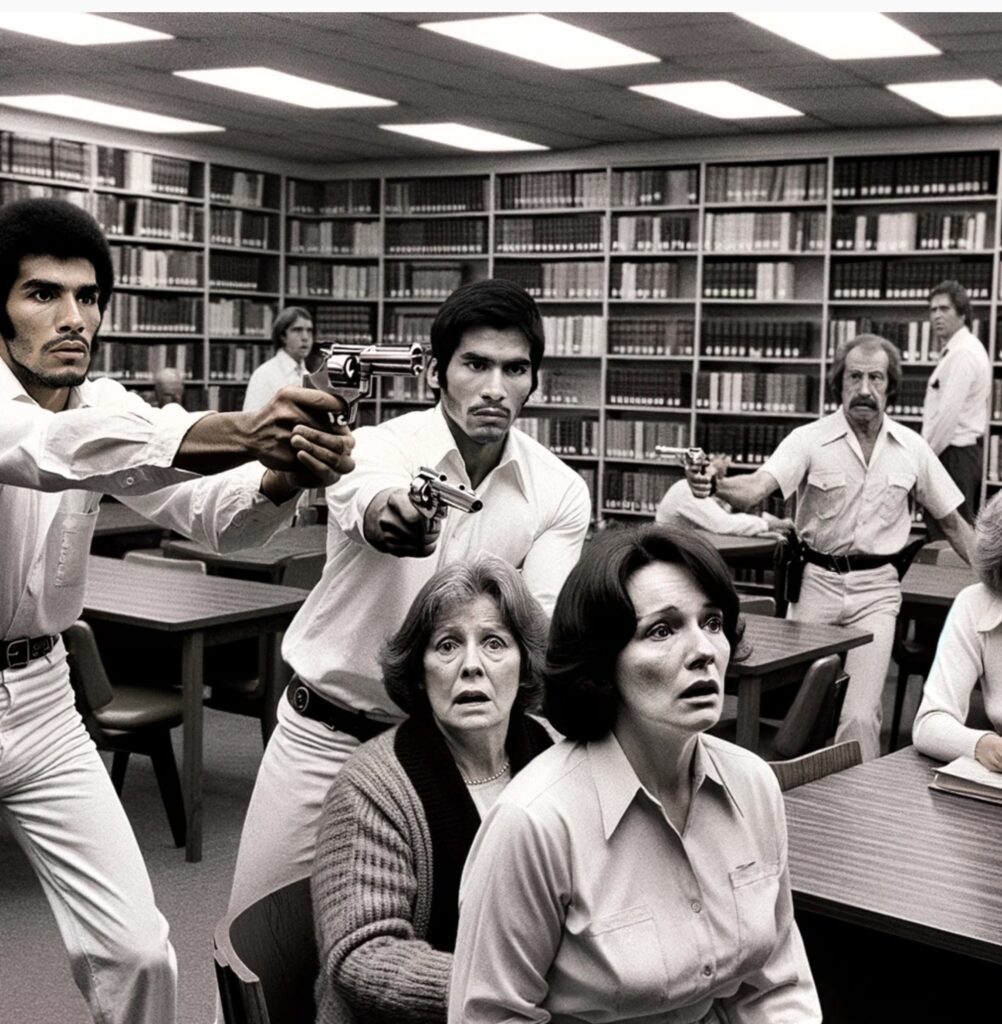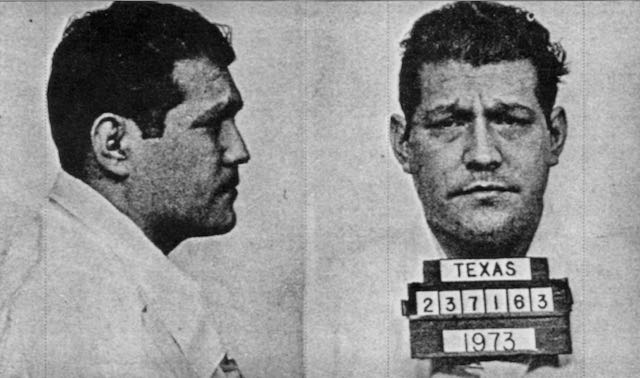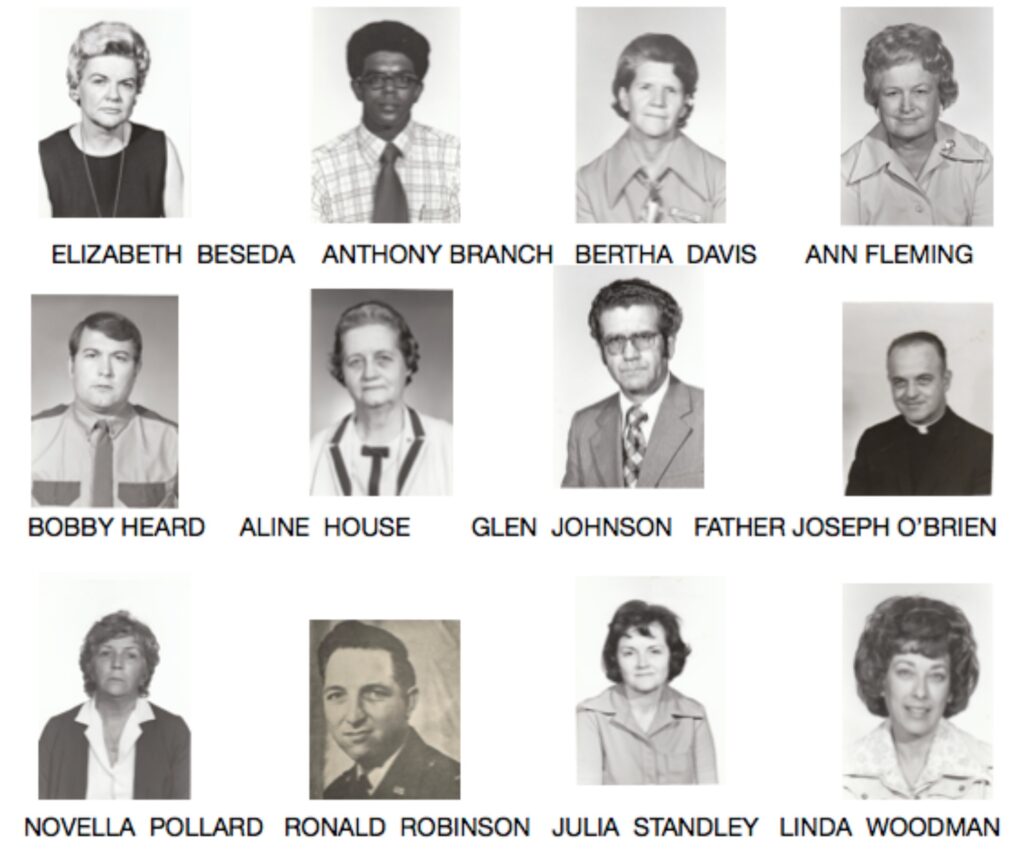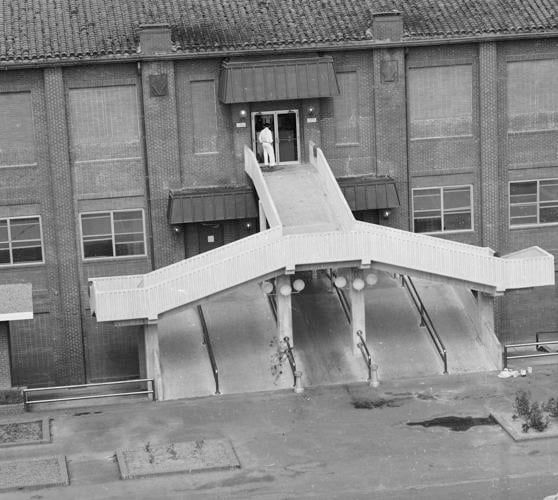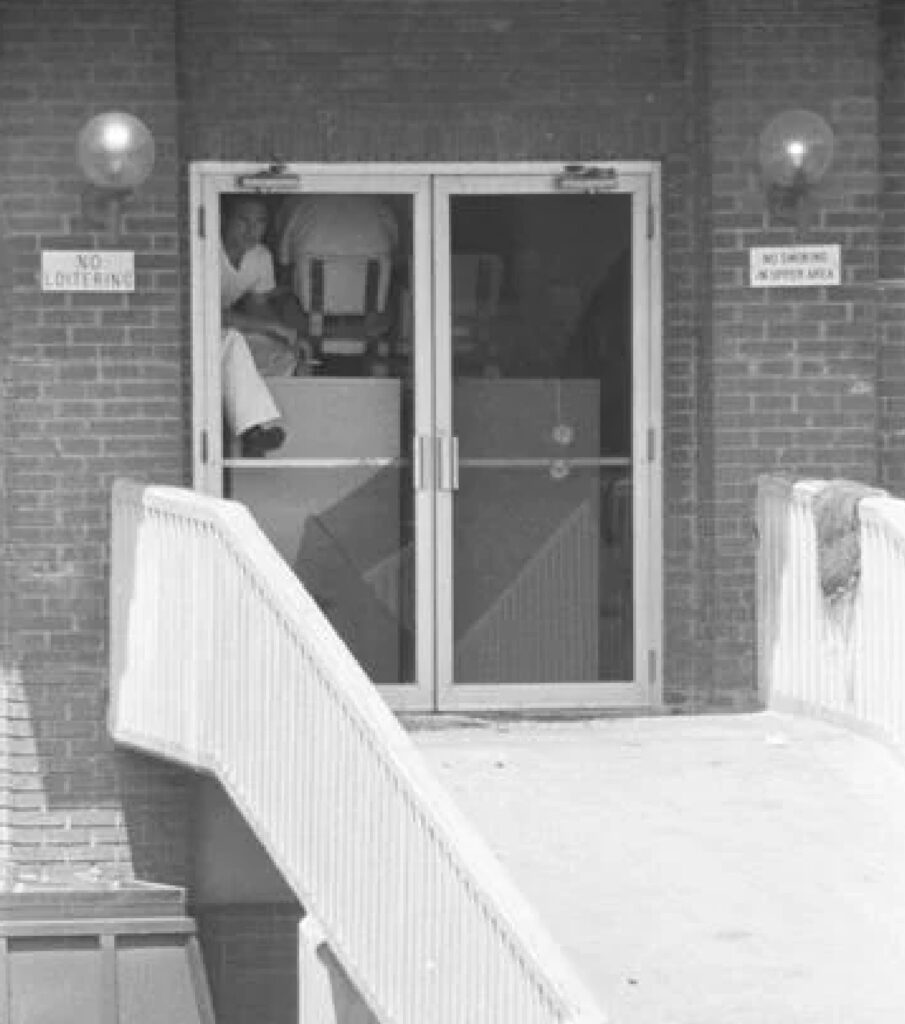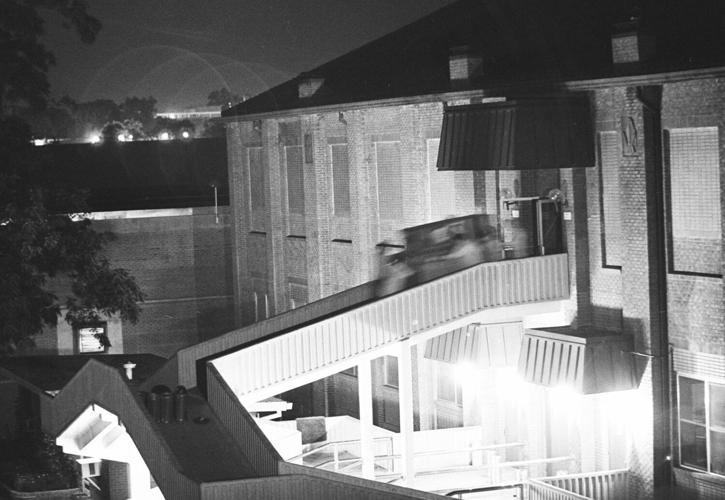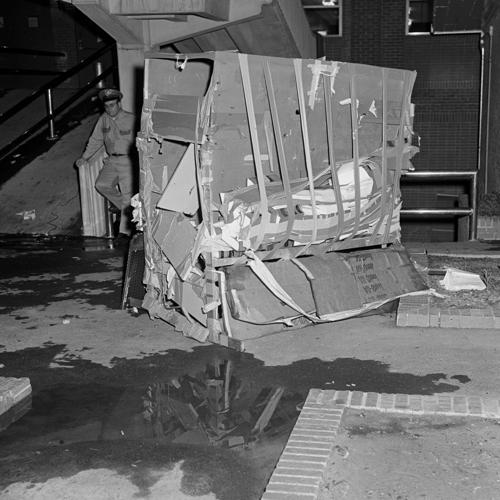HUNTSVILLE, Texas — Fifty years ago, Huntsville, Texas, became the center of national attention as a tense prison hostage crisis unfolded inside its first state prison known as the “The Walls Unit.” For 11 days behind its 15-foot red brick wall in the sweltering summer of 1974, three armed inmates held fifteen people hostage, culminating in a violent shootout that left two hostages and two inmates dead.
The longest prison siege in American history started at 1 PM on Wednesday, July 24, 1974, inside the unit’s education building. Frederico “Fred” Gomez Carrasco, a 34-year-old notorious drug lord serving a life sentence for the attempted murder of a San Antonio policeman, and two other armed inmates stormed the prison library located on the third floor of its education building.
The Notorious Leader: Fred Carrasco
Fred Carrasco, infamously dubbed the “Mexican Connection” by law enforcement, was the Pablo Escobar of his time, a notorious drug lord whose empire and ruthless tactics echoed those of the infamous Colombian kingpin. He ruled a vast cocaine and heroin empire spanning from San Diego to Chicago. Born and raised in San Antonio, Texas, Carrasco embarked on his criminal journey at fifteen.
By the late 1960s, he had ascended to the pinnacle of his illicit career. Operating from Nuevo Laredo, Texas, Carrasco maneuvered seamlessly across the United States and Mexico, largely undeterred by authorities.
The Criminal Empire of El Señor
Carrasco’s ruthless reputation was immortalized in Spanish ballads, celebrated in local dance halls, and feared by many. He boasted about gunning down 47 men. His tales of violence and audacity earned him the fearsome moniker “El Señor” (The Man). His legend, marked by gun-slinging bravado and a chilling body count, cemented his status as one of Texas’s most feared and deadly figures in the drug trade.
The Hostage Takers: Vicious and a Nut Case
Aiding Carrasco were inmates 42-year-old Ignacio Cuevas, considered by fellow convicts as a real “nut case,” and 28-year-old Rudolfo (Rudy) Dominguez, described by the prison chaplain as a “vicious man” who believed in nothing. During the ordeal, the hostages believed Dominguez was the inmate most likely to harm them.
The Hostages and Their Ordeal
Among the hostages was Ann Flemming, a 50-year-old librarian who had been working at the prison for just 20 days. Just as the prison whistle blew to signal that lunch had ended, Carrasco rose to his feet and fired a single round into the ceiling of the library from a .357 caliber revolver. Carrasco shouted, “Stop right there, or I will kill you!” Flemming recalled her experience during an interview twenty years ago. “The thing that really amazed me,” she said, “was how everyone — men, women, guards — was terrorized. I was afraid. I realized that there was no way out.”
Smuggling Weapons Inside The Prison
Carrasco used an inmate trustee who worked outside the prison during the day to smuggle weapons and ammunition into the formidable red-brick prison that dominates downtown Huntsville. His gang threatened to kill the inmate’s family if he failed to cooperate.
They concealed a .38 caliber revolver inside a hollowed-out ham, wrapped two .357 caliber revolvers in packages of meat, and hid hundreds of bullets inside a huge can of peaches. This elaborate smuggling operation occurred before metal detectors became commonplace in prisons, airports, and government buildings.
Carrasco’s Confinement and Cunning Exploits
The prison system would have assigned Carrasco to a maximum-security unit, but he was recovering from three gunshot wounds inflicted by San Antonio police a year earlier. Instead, officials confined him to the medium-security Walls Unit due to its proximity to a prison hospital and lower risk of an escape attempt.
The five-foot-seven, 210-pound dangerous inmate was given light duty as a janitor for Father Joseph O’Brien, the 46-year-old prison chaplain. Exploiting this position, Carrasco illicitly used the prison chapel’s telephone to make long-distance calls to his gang. When Carrasco seized the library, he revealed hundreds of rounds of ammunition that he had cunningly taped around his legs and concealed under his pants.
Gunfire Turns Back Rescuers
Two of the hostage takers opened fire on Lt. Wayne Scott and Sgt. Bruce Noviske when the unarmed officers ran up a ramp leading to the prison library. A bullet grazed the shirt worn by Wayne Scott, who is now the former Director of the Texas Department of Criminal Justice, and a Noviske received a flesh wound to his left foot.
Human Hostage Shields
After taking over the library, Carrasco barricaded the entrance with a large file cabinet. He forced hostages to take turns sitting on top of it to deter a rescue assault. The only entrance was a double plate glass door that opened to a two-story tall winding exit ramp.
To prevent inmates from being distracted during school classes, the prison system had covered the library’s windows with bricks, rendering officers unable to see inside or deploy tear gas canisters. As a result, they covertly monitored the situation by slipping a microphone down a pipe chase.
Outrageous Demands
Carrasco took eleven prison employees hostage, consisting of seven women and four men, plus an additional four inmates. Father Joseph O’Brien, who initially acted as a messenger, volunteered to stay with the hostages after the release of one who suffered a heart attack. During the first day, Carrasco released 56 inmates in exchange for a TV set and 15 pairs of handcuffs, used later to restrain the hostages.
Later, Carrasco demanded three Army M-16 rifles with full ammunition magazines and 100 rounds for each, three bulletproof vests, helmets, plus walkie-talkies. Carrasco wasn’t going any farther than the prison walls. Texas Department of Corrections policy strictly forbade the release of prisoners in exchange for hostages, setting the stage for a prolonged standoff.
The Media Circus
The Huntsville Item newspaper published its first extra since World War II, knocking President Richard Nixon’s Watergate Scandal off its front page.
As news of the siege spread, Huntsville transformed into a media circus. Reporters from across the country descended on the small town, broadcasting live updates and speculating on the fate of the hostages. The crisis became a national spectacle, with millions of Americans following the drama as it unfolded.
Negotiations and Manipulations
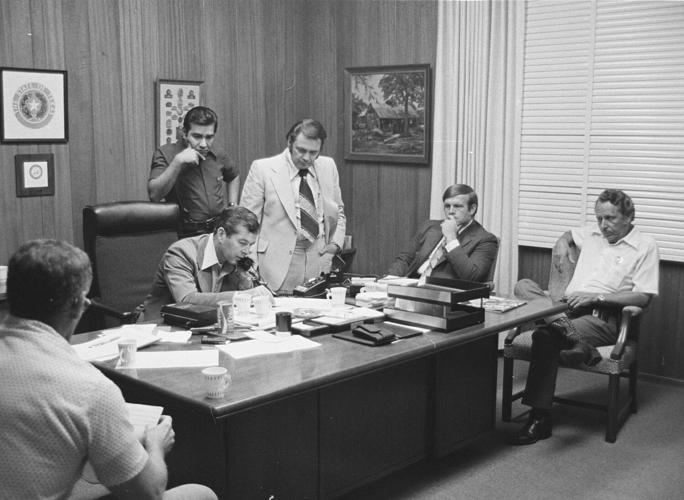
Inside the library, the situation was tense and unpredictable. James Estelle Jr., the Director of the Texas Department of Corrections (TDC), and officials set up a command post in the warden’s office dubbed the “Think Tank.” Estelle, assisted at times by Rueben Montemayor, Carrasco’s attorney from San Antonio, engaged in marathon negotiations and used stalling tactics with Carrasco. The mercurial psychopath repeatedly threatened to shoot or blow up the hostages if Estelle did not meet his demands. Dominguez and Cuevas tormented the hostages by brandishing guns at their heads.
Tormenting Hostages
Carrasco attempted to manipulate the hostages and their families, coercing some into crying during phone calls, including one with Governor Dolph Brisco on the second day of the standoff.
Repeatedly threatened with death, some hostages sharply criticized the Texas Department of Corrections for not yielding to Carrasco’s demands, believing it was the only way to secure their release.
In one moment, Carrasco would threaten to kill the hostages if his demands were not met within ten minutes. In the next, he would calm down and request Kentucky Fried Chicken.
Releases and Maintaining Order
During the takeover, Carrasco released four hostages at different intervals, including the prison’s director of education, who suffered a heart attack on the first day, and a librarian who faked a heart attack. An inmate hostage, desperate to avoid implication, escaped by diving through a plate glass door on the sixth day. Carrasco freed a final hostage on the tenth day of the standoff to present his escape plan to prison director Estelle.
Meanwhile, Warden Howell Husbands had to maintain order among 1,900 inmates. The dining hall was below the library, and the slightest sounds would set off the paranoid hostage takers. Husbands had to lock down the unit and serve sandwiches in paper bags to the cells.
Vague Escape Plan
It became clear to Estelle and FBI agent Bob Wiatt that Carrasco did not have a well-thought-out escape plan. At the start of the siege, officers surrounded the prison and Huntsville with a security blanket to thwart any attempt by Carrasco’s gang to make his getaway. Rumors circulated that the gang planned to kidnap officer’s families.
Carrasco demanded expensive men’s apparel to replace their white inmate uniforms, bulletproof vests, helmets, walky-talkies, and weapons. Estelle provided $1300 worth of suits and dress shoes.
Fearing that prison snipers would shoot them in the head, Carrasco ordered the creation of three steel helmets to protect them. The headgear resembled the armor the Knights of King Arthur’s Roundtable wore. These helmets are now on display at the Texas Prison Museum.
The hostage takers talked among themselves about escaping to Cuba, where they thought Communist dictator Fidel Castro would give them sanctuary.
On the eighth day of the siege, Carrasco demanded an armored truck. While officials did provide the truck, they gave no assurances that he would be allowed to drive away with the hostages.
The Trojan Horse
The inmates built a makeshift “Trojan Horse” to cover their escape to the waiting armored truck. They taped together a pair of six-by-six-foot chalkboards fortified with 700 pounds of library law books wrapped around the outside as a shield.
At 9:27 pm on the 11th day of the standoff, Carrasco and his two henchmen secured themselves inside the three-foot space between the chalkboards. They handcuffed themselves to three hostages who volunteered to get inside the contraption: teacher Von Beseda; librarian Judy Standley; and prison school principal Novella Pollard. Chaplain Father Joseph O’Brien also got inside.
The conspirators handcuffed the remaining eight hostages, consisting of civilian employees and inmates, to a rope wrapped around the outside of the Trojan Horse. They were supposed to maneuver the rickety shield down a winding ramp.
The Ambush and the Shootout
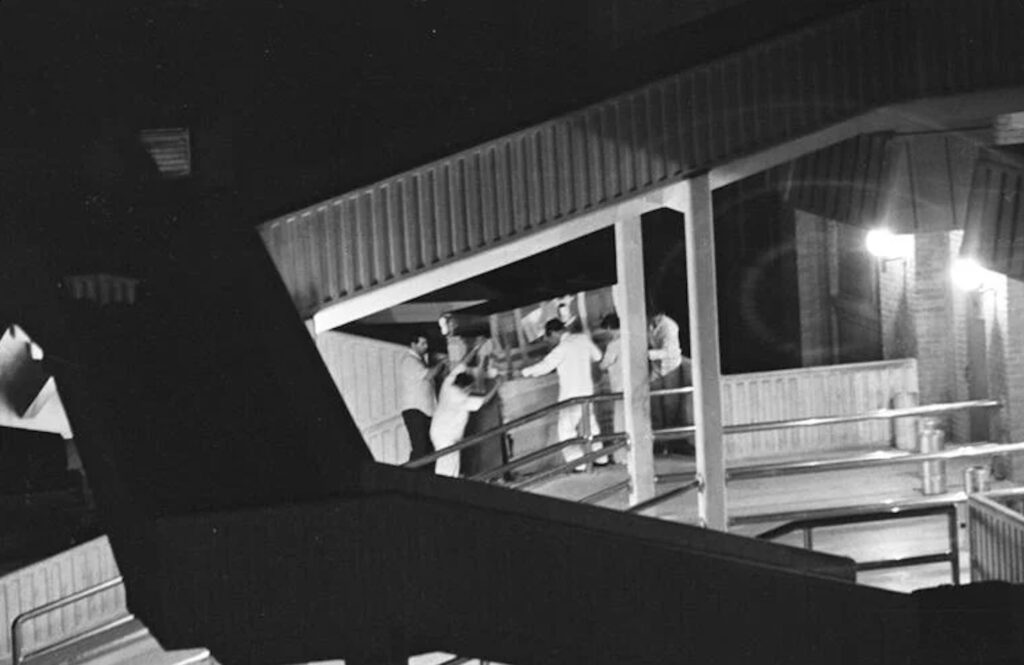
Prison Director Estelle had no intention of letting Carrasco and his confederates reach the armored truck.
An assault team hid, waiting with a high-pressure fire hose.
When the Trojan Horse jammed against the handrail on the last right-angle turn of the four-turn ramp. Officers yelled for the hostages to duck.
They unleashed torrents of water onto the Trojan Horse. However, the plan to topple it went awry when the hose uncoupled, causing a significant pressure drop.
The Final Deadly Moments
As soon as the first water blast hit the shield, Carrasco pumped a deadly hollow point round into Von Beseda’s heart. Dominguez fired three deadly rounds into Judy Standley’s back. Another bullet splintered Father O’Brien’s left arm and lodged fragments near his heart. Inmate Cuevas faked passing out and fell taking Pollard down as bullets zipped above them.
Gunfire erupted from inside the Trojan Horse through gun ports Carrasco and his accomplices had cut in the chalkboards. A twenty-two-minute gun battle ensued. FBI agent Bob Wiatt took two rounds in the chest of his bullet-resistant vest. Texas Ranger Captains James (Pete) Rogers and G.W. Burks also took hits in their vests. The three officers quickly recovered and rejoined the fight.
Officers used a ladder as a battering ram to topple the shield. Amidst the gunfire, TDC Lieutenant Willard Stewart bravely cut the hostages loose from outside the Trojan Horse, saving their lives.
The toppled Trojan Horse exposed Carrasco, who had shot himself in the head. A Department of Public Safety Intelligence officer lunged into the fray and delivered three fatal shots into Dominguez.
Inmate Cuevas, pretending to be unconscious, slid down the ramp in a stream of bloody water and was taken into custody.
The last shots were fired at 9:50 pm, ending the eleven-day siege on the moonlit night of August 3, 1974.
Aftermath and Commemoration
Seventeen years later, Ignacio Cuevas was put to death by lethal injection inside the Walls Unit, where he had taken part in the murders of Von Beseda and Judy Standley.
The San Antonio police officers who were in the shootout that had sent Carrasco to the Walls Unit later said, “We should have killed him when we had the chance.”
The Texas Prison Museum commemorated the historic July 24, 1974, hostage siege on its 50th anniversary. Robert Riggs moderated an emotional tribute that united families of the slain hostages and the officers who put their lives at risk during the longest prison siege in United States history.
The Texas Prison Museum offers a captivating and in-depth look at the history and operations of the state’s prison system, which is renowned as the world’s largest. Established in 1989 in Huntsville, Texas, the museum stands as a testament to the complex history of incarceration in Texas, a history stretching back to 1848 when the first prison, the Huntsville Unit, was built.
FOLLOW the True Crime Reporter® Podcast
SIGN UP FOR my True Crime Newsletter
THANK YOU FOR THE FIVE-STAR REVIEWS ON APPLE Please leave one – it really helps.
TELL ME about a STORY OR SUBJECT that you want to hear more about
